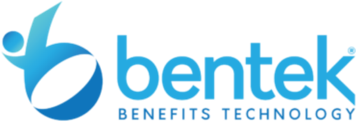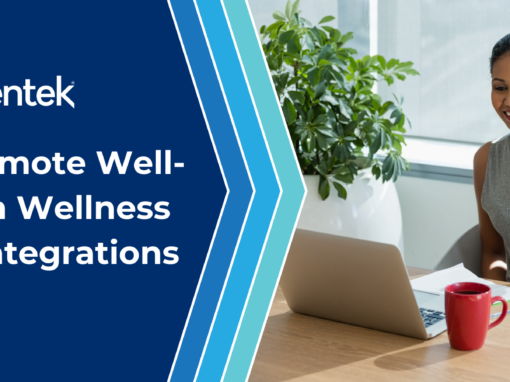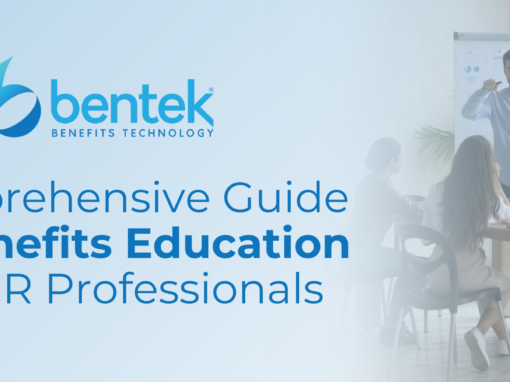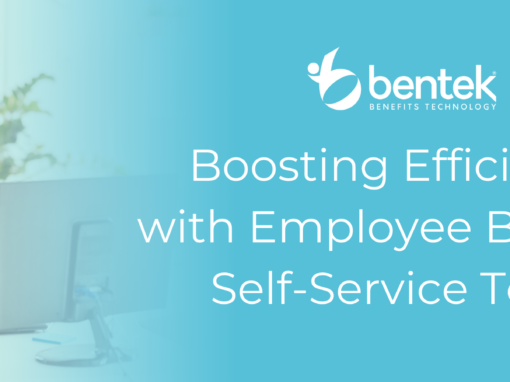In today’s dynamic workplace, the demand for tailored employee benefits experience is more pronounced than ever. Remarkably, 70% of employees want customizable benefits, and this trend continues to rise as more employees prioritize personalization, according to Marsh McLennan’s 2024 Employee Health & Benefits Trends Report. This statistic highlights a significant shift towards customization and flexibility in the employee benefits landscape, aiming to address the diverse needs of a multifaceted workforce.
The appeal of personalized employee benefits packages extends beyond meeting unique needs. They have the power to significantly enhance job satisfaction, boost employee engagement, and improve retention rates. Numerous studies and reports consistently show a strong correlation between personalized benefits and organizational success, underscoring the strategic value of this approach.
Personalizing employee benefits is not just a passing trend; it’s a vital strategy for cultivating a supportive and inclusive work environment. This approach aligns with the broader objectives of HR professionals and benefits administrators across all sectors.
This article aims to provide HR professionals and benefits administrators with actionable insights and practical steps for creating a personalized employee benefits experience.
Step 1: Assess Employee Needs and Preferences
Understanding the unique needs and preferences of employees stands as the cornerstone of crafting a benefits package that truly resonates. The journey towards creating tailored employee benefits begins with a deep dive into the diverse expectations within your workforce. This step is not just about ticking boxes but ensuring that your benefits strategy aligns perfectly with the individual and collective needs of your employees.
Conduct Comprehensive Assessments:
- Employ Surveys and Focus Groups: Initiate the process by deploying well-structured surveys and organizing focus groups. These tools are invaluable in capturing the voice of your employees, offering insights into their expectations and preferences regarding benefits.
- Leverage Analytics: Utilize the power of Human Resources Information System (HRIS) and Benefits Administration Software (BAS) analytics to mine data on employee behavior, benefits usage patterns, and other relevant metrics. This data-driven approach enables a more nuanced understanding of employee needs.
Highlight the Gap with Statistics
- Understanding the Disconnect: In Aflac’s 2022 Workforce Report, they found that 67% of public sector employers believe employees are highly satisfied with their benefits, compared to 55% of employees. This gap underscores the critical need for employers to pay closer attention to individual employee needs and preferences.
Crafting Meaningful Survey Questions
- Elicit Meaningful Responses: Focus on designing survey questions that go beyond superficial inquiries. Questions should encourage employees to articulate their needs, preferences, and the kind of benefits they value most.
- Analyzing Data for Trends: Analyze the gathered data meticulously to identify clear trends and priorities. Pay special attention to varying needs across different demographics within your workforce, such as generational differences, to ensure inclusivity in benefits design.
Align Benefits with Company Culture and Values
- Reinforce Organizational Identity: Ensure that the benefits package reflects and reinforces the company’s culture and values. According to Mercer, 81% of employees who receive 10 or more benefits believe their employer cares about their health and well-being. This alignment not only enhances the perceived value of the benefits among employees but also strengthens their sense of belonging and commitment to the organization.
- Mission-Driven Benefits Design: Position your benefits strategy as an extension of the organization’s mission. By doing so, you communicate a powerful message about the company’s commitment to the well-being and satisfaction of its employees.
By placing a strong emphasis on assessing employee needs and preferences through comprehensive methods, organizations can lay the foundation for a benefits package that truly aligns with the aspirations and needs of their workforce. This approach not only bridges the gap between employee expectations and organizational offerings but also fosters a culture of understanding, respect, and mutual growth.
Step 2: Offer a Flexible and Customizable Benefits Platform
Technology: A Catalyst for Customization
The advent of technology in the realm of employee benefits has transformed the traditional benefits landscape into a dynamic ecosystem capable of accommodating the diverse needs of the modern workforce. In a recent report from MetLife, the stated that 62% of employers plan to increase investment in digital health tools for personalized benefits in 2024.
Through sophisticated platforms, employees now enjoy the liberty to tailor their benefits package, selecting from a broad array of health plans, wellness initiatives, and retirement savings options. These platforms leverage cutting-edge technology to offer:
- Personalized Benefits Selection: Employees can customize their benefits package with ease, ensuring their selections align with personal and family needs.
- Seamless Integration: These systems integrate seamlessly with existing HR software, allowing for a unified management experience.
- Real-Time Adjustments: Employees have the flexibility to make real-time adjustments to their benefits, adapting to life changes as they occur.
The power of technology in creating a tailored employee benefits experience cannot be overstated. It not only empowers employees but also significantly reduces the administrative burden on HR departments.
A Spectrum of Choices
A key to personalizing the employee benefits experience lies in the diversity of the offerings. By providing a wide range of options, organizations can cater to the unique lifestyles and life stages of their employees. Essential components include:
- Diverse Health Plans: From traditional PPOs to high-deductible health plans and HSAs, offering a variety caters to varying healthcare needs and financial preferences.
- Wellness Programs: These can range from fitness membership reimbursements to mental health support, addressing the comprehensive well-being of employees.
- Retirement Savings Options: Offering a variety of retirement plans, such as pensions, 401(k)s, and IRAs, with varying contribution matches, allows employees to plan for their future according to their financial goals.
The importance of this diversity cannot be understated; it is the bedrock upon which a truly personalized benefits experience is built.
Success Stories and Case Studies
The implementation of flexible benefits platforms has led to notable successes across various sectors. Anonymized data from numerous organizations, including government entities, reveals compelling outcomes:
- Enhanced Employee Retention: Organizations that adopted customizable benefits platforms reported a 41% higher employee retention rate, according to Gallup.
- Improved Satisfaction: Case studies and reports across all sectors indicate that employee satisfaction surges when individuals have the autonomy to design their benefits package, leading to increased engagement and productivity. For more details, check out this article from Vorecol.
These success stories underscore the tangible benefits of personalized employee benefits, not just for the workforce but for the organization as a whole.
Logistical and Administrative Considerations
While the advantages of offering flexible benefits are clear, several logistical and administrative considerations must be addressed:
- Robust Administrative System: A sophisticated system is necessary to manage the complexity of customizable benefits, ensuring smooth operation and compliance.
- Cost Implications: Organizations must evaluate the potential impact on benefits costs carefully, balancing flexibility with financial sustainability.
- Management Workload: The introduction of customizable options may initially increase the workload for HR departments. However, with the right technology and processes in place, this challenge can be efficiently managed.
In addressing these considerations, organizations pave the way for a benefits administration that not only meets the needs of their employees but also aligns with their operational capacities and strategic objectives.
Step 3: Use Technology to Streamline and Personalize the Employee Benefits Experience
The evolution of technology has ushered in a new era for employee benefits administration, making it possible to offer a more personalized and efficient experience. By leveraging the latest advancements, organizations can meet the individual needs of their workforce, enhancing satisfaction and engagement.
The Role of AI and Automation in Benefits Administration
The introduction of AI-driven platforms in the realm of benefits administration has been a game-changer. These technologies enable:
- Automated Workflows: Simplifying the enrollment process, reducing manual tasks and the potential for human error.
- AI-driven Recommendations: Using employee data to provide personalized benefits recommendations, ensuring each employee gets the most relevant options.
- Real-time Management: Allowing both HR professionals and employees to manage benefits in real-time, adapting quickly to any life changes.
According to a PwC report, the use of AI-based platforms led to a 34% increase in benefits enrollment satisfaction among employees. This statistic alone highlights the positive impact technology can have on the benefits experience.
Personalization Through Predictive Analytics
Predictive analytics takes personalization a step further by analyzing vast amounts of data to forecast future benefits needs and preferences. Examples of its application include:
- Identifying Trends: Analyzing past benefits selections to predict what benefits options will be most valued in the future.
- Customized Recommendations: Offering individual employees benefits options based on their past selections, current life stage, and predictive future needs.
- Enhanced Employee Engagement: By receiving personalized recommendations, employees feel understood and valued, leading to increased engagement with the benefits package offered.
Addressing Challenges in Technology Implementation
While the advantages of incorporating technology into benefits administration are clear, several challenges must be addressed:
- Data Privacy Concerns: The use of AI and analytics raises concerns about the handling and protection of personal employee data. Ensuring robust data protection measures and transparency in data usage is essential.
- Need for Employee Training: Introducing new technologies requires training employees on how to use these platforms effectively. According to MetLife, 56% of employees prefer benefits information via video, podcasts, or online portals, with a growing trend toward mobile-first engagement. Developing comprehensive training programs is crucial for maximizing the benefits of technology.
- Overcoming Resistance to Change: Resistance to new technologies can be a significant barrier. Communicating the benefits and providing support during the transition can help mitigate this challenge.
By tackling these issues head-on, organizations can unlock the full potential of technology to create a more tailored and efficient employee benefits experience. The journey towards a digitized, personalized benefits administration not only caters to the immediate needs of the workforce but also aligns with the broader objectives of enhancing employee satisfaction and organizational success.
Step 4: Communicate Clearly and Frequently with Employees
Effective communication stands as the backbone of a successful employee benefits program and 83% of employees say that benefits communication needs to be clearer and more engaging for them to make informed decisions, according to MetLife.
Successful communication strategies ensures that employees not only understand but also appreciate the depth and breadth of their benefits package. This section delves into the strategies that underpin effective communication and shares insights on leveraging these strategies to enhance employee engagement with benefits.
Utilizing Multi-Channel Communication Strategies
- Personalized Emails: Tailor communication to meet the individual preferences and needs of employees, ensuring the message resonates and drives action.
- Intranet Portals: Create a centralized repository for all benefits-related information that is accessible at any time, fostering a culture of self-service and empowerment among employees.
- Interactive Webinars: Host live sessions where employees can learn about their benefits, ask questions, and get immediate responses, making the benefits experience interactive and engaging.
The use of these diverse channels ensures that communication reaches every employee in the most effective manner, catering to different learning and engagement preferences.
Embracing Clarity and Visual Engagement
- Clear, Jargon-Free Language: Simplify the complex world of employee benefits by using language that is easy to understand, removing barriers to comprehension.
- Engaging Visuals: Incorporate infographics, videos, and interactive guides to explain benefits options and enrollment processes, making the information more accessible and digestible.
These approaches help demystify the benefits for employees, ensuring they can make informed decisions without feeling overwhelmed by the complexity of the information.
Implementing Feedback Mechanisms
- Surveys: Regularly solicit feedback on the benefits package and the communication methods used, allowing for continuous improvement based on direct employee input.
- Q&A Sessions: Regularly scheduled sessions can address common concerns and individual queries, ensuring employees feel heard and supported.
Feedback mechanisms not only provide valuable insights for HR but also foster a sense of inclusion and value among employees, enhancing their overall experience.
Creating an Annual Communications Calendar
- Key Dates Identification: Pinpoint critical dates in the benefits enrollment cycle, such as open enrollment periods, renewal dates, and any deadlines for making changes to benefits.
- Scheduled Communications: Plan communications around these key dates, ensuring employees receive timely and relevant information when they need it most.
- Consistency and Timeliness: Maintain a regular cadence of communication throughout the year, keeping benefits top of mind and ensuring employees are well-informed at all times.
An annual communications calendar acts as a strategic tool, ensuring that every communication is purposeful, timely, and aligned with the overarching goals of the employee benefits program.
By emphasizing the critical role of effective communication, utilizing multi-channel strategies, embracing clarity and visual tools, implementing feedback mechanisms, and creating an annual communications calendar, organizations can ensure that their employees not only understand their benefits package but also appreciate its value. This comprehensive approach to communication is pivotal in enhancing employee engagement, satisfaction, and ultimately, retention.
Step 5: Evaluate and Continuously Improve Your Employee Benefits Expereince Strategy
Creating a tailored employee benefits experience does not end with the rollout of a program. It evolves with your workforce, requiring regular review and updates to ensure it remains relevant, competitive, and valued by employees. This iterative process is key to maintaining high levels of employee engagement and satisfaction.
Importance of Regular Reviews
- Adapt to Changing Employee Needs: Workforce demographics and individual circumstances change over time, necessitating adjustments to benefits offerings.
- Stay Ahead of Market Trends: Benefits that are innovative today may become standard tomorrow. Keeping abreast of market trends ensures your offerings remain attractive.
- Reflect Organizational Changes: As your organization grows and changes, your benefits strategy should align with new business objectives and cultural shifts.
Regularly evaluating and updating your benefits strategy is not merely an administrative task; it’s a strategic imperative that can significantly impact employee retention and satisfaction.
Gathering Actionable Feedback
- Annual Satisfaction Surveys: These can provide comprehensive insights into how employees perceive their benefits and what changes they desire.
- Exit Interviews: Departing employees can offer candid feedback on aspects of the benefits package that may have influenced their decision to leave.
- Focus Groups: Small, focused discussions can delve deeper into specific benefits issues, providing nuanced insights that surveys might not capture.
Leveraging these feedback mechanisms ensures that the benefits strategy remains aligned with employee needs and expectations, fostering a culture of listening and responsiveness.
Leveraging Data Analytics
- Utilization Rates: Analyze which benefits are most and least used to identify underappreciated offerings that may need reevaluation.
- Cost-Benefit Analysis: Examine the cost of benefits versus their perceived value to employees to ensure financial sustainability.
- Employee Engagement Metrics: Track changes in employee engagement scores as benefits are added or modified to gauge their impact.
Data analytics offers a powerful tool for measuring the success of your benefits offerings and identifying areas for improvement. It turns subjective feedback into objective, actionable insights.
The Benefits of Continuous Improvement
According to Deloitte, 90% of companies that regularly assess and update their benefits offerings report higher levels of employee engagement. This statistic underscores the critical link between a dynamic benefits strategy and organizational success. Regular updates not only keep employees engaged but also signal to them that their well-being and satisfaction are top priorities for the organization.
Encouraging a Culture of Innovation
- Stay Informed: Keep up with the latest in benefits administration technology and solutions that can streamline processes and enhance the employee experience.
- Pilot New Offerings: Test new benefits on a small scale before a full rollout to gauge employee interest and feasibility.
- Employee Involvement: Involve employees in the evaluation and selection of new benefits, fostering a sense of ownership and alignment with their needs.
Fostering a culture of innovation within HR and benefits administration teams ensures that your organization remains at the forefront of offering a competitive and customized benefits experience. This proactive approach not only benefits the current workforce but also positions the organization as an employer of choice for prospective talent.
Conclusion: Building a Better Employee Benefits Experience
Creating a tailored employee benefits experience stands as a pivotal movement in the landscape of modern HR management, addressing the nuanced needs of a diverse workforce. As we navigate through the intricacies of employee satisfaction, it becomes clear that the one-size-fits-all approach to benefits administration falls short. The steps outlined in this guide not only pave the way for a more engaged and satisfied workforce but also underscore the strategic importance of personalization in the realm of employee benefits.
Emphasizing Personalization in Benefits Design
- Evolving Workforce Demands: Recognize that the workforce today is more diverse than ever, encompassing varying generational, lifestyle, and health needs that require a bespoke approach to benefits.
- Strategic Alignment: Ensure that your benefits strategy aligns with the overarching goals of your organization, enhancing your employer brand and supporting your recruitment and retention efforts.
- Data-Driven Insights: Utilize HRIS analytics, employee feedback, and market research to continuously refine and personalize your benefits offerings, ensuring they remain relevant and valued.
The journey towards creating a tailored employee benefits experience necessitates a departure from traditional benefits frameworks, urging HR professionals to embrace flexibility, innovation, and a deep understanding of their workforce.
The Power of a Personalized Benefits Package
- Attracting Top Talent: A customized benefits experience can significantly enhance your employer’s value proposition, making your organization more attractive to prospective employees.
- Boosting Employee Engagement: Personalized benefits meet employees’ specific needs, leading to higher levels of job satisfaction and engagement.
- Enhancing Retention Rates: Employees who feel their unique needs are recognized and valued are more likely to remain loyal to an organization, reducing turnover costs.
The impact of a well-crafted, personalized benefits package on organizational success cannot be overstated. It serves not only as a tool for employee satisfaction but also as a strategic asset in the competitive corporate landscape.
Want to Make a Difference at Your Organization?
- Reevaluate Your Benefits Offering: Take a critical look at your current benefits package. Does it offer the flexibility and personalization necessary to meet the diverse needs of your workforce?
- Conduct an Employee Needs Assessment: Engage with your employees through surveys, focus groups, or one-on-one meetings to gather insights into their benefits preferences and requirements.
- Embrace Continuous Improvement: View your benefits strategy as a living entity that evolves with your workforce. Commit to regular reviews and adjustments based on employee feedback and changing market trends.
By taking proactive steps towards personalizing your benefits experience, you lay the groundwork for a more engaged, satisfied, and productive workforce.
For more articles like this, check out the Bentek Blog!




